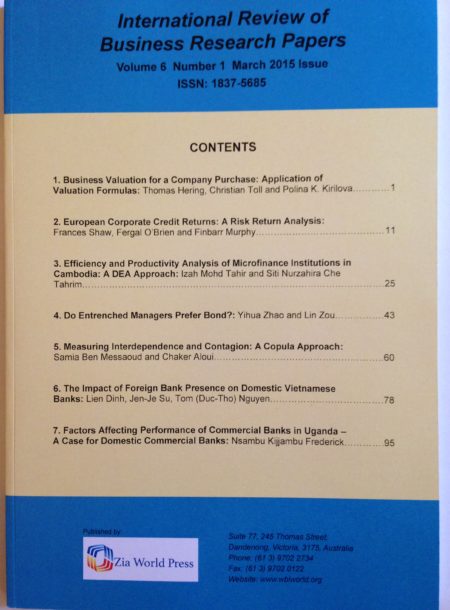International Review of Business Research Papers
Vol. 13. No. 2., September 2017, Pages: 100 – 117
Remittance, Exchange Rate and Dutch Disease: The Case of Bangladesh
Sakib B. Amin and Muntasir Murshed
Bangladesh had historically relished the fortune of being a labor surplus nation and therefore had accumulated remittances in large volumes over the last four decades. Thus, the concept of remittance-effectiveness in shaping the economy of Bangladesh emerges with utmost significance and importance amidst researchers and policy makers all around the globe. The aim of this paper is to identify the dynamics of real exchange rate movements following inflow of remittances in Bangladesh over the period of 1980 to 2013 and whether such movements caused Dutch disease problem in the country. This paper fills the gap in the empirical literature using the ARDL bounds testing approach to investigate the causal relationship between foreign remittance and real exchange rate exclusively in the context of Bangladesh. Augmented Dickey Fuller (ADF) test, ARDL cointegration test, ARDL Error Correction Model (ECM) approach and ARDL Engle-Granger causality test are used in the paper. The results confirm that there is a negative correlation between remittance and real exchange rate which implies that a rise in the volume of remittance inflows exert appreciative pressures on Bangladesh’s real exchange rate. However, such real exchange rate movements were not translated into Dutch disease problems.
DOI :
https://doi.org/10.21102/irbrp.2017.09.132.07

